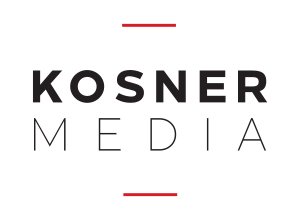John Kosner on “Hot Mic” issues with Sportico’s John Wall Street
Original Article: Sportico, by JohnWallStreet, April 13th, 2021
Back in late March, NHL referee Tim Peel was fired after admitting on a “hot mic” that a penalty called in a game between the Nashville Predators and Detroit Red Wings was predetermined. That slip-up came two months after Golf Channel microphones caught PGA Tour star Justin Thomas uttering an anti-gay slur following a missed putt. (It’s believed he was fined; the PGA does not publicly disclose disciplinary actions toward its members.) That followed just weeks after Meyers Leonard was banished from the Miami Heat indefinitely for using a derogatory term during a live video game stream (Kyle Larson was fired by Chip Ganassi Racing for a similar offense in 2020). But despite the series of costly microphone missteps, a pair of media industry insiders—Mark Gross (senior vice president, production and remote events, ESPN) and Dan Cohen (SVP, Octagon)—expect that leagues will only be providing their media partners with more access moving forward (think: MLB Spring Training on ESPN). “Collectively, the top priority [for leagues and networks] is serving the sports fan, and access is at the very top of the list of what they want,” Gross said.
Our Take: Sports leagues looking to gain younger fans and/or keep them engaged will provide more and more access to their media partners because that is what sports fans have come to expect. “This is an established element of broadcast at this point,” Cohen said. “[The leagues] opened up the opportunity for fans to be this close to the action. [They] can’t close that lid now. Sports leagues are punching into the wind if they think they can [now] turn the ship away from providing consumers a better viewing experience.” Gross agreed, saying, “Access has been increasing for a long time now across sports, so the cat is out of the bag in that regard.”
Research studies done by ESPN during the 2020 season have confirmed that point. When given a choice of alternative production elements, most fans advocated for ones that brought them deeper into the telecast. The element fans were most passionate about was the utilization of player microphones to provide the natural sounds and conversations during a game.
John Kosner was on board with that line of thinking until the recent succession of hot mic incidents. The former NBA and ESPN executive-turned-startup investor now views “the combination of hot mic risk, social media’s instant global distribution and the current unforgiving culture that we all live in” as too great a liability for the big four leagues, and thinks a change in approach is on the horizon. The potential for “players, coaches and executives [to blow] themselves up instantaneously by saying the wrong thing at the wrong time is so palpable that you’re going to have people retreating here. When you have incidents that come up, and the punishment is that the person who makes the mistake is gone forever, there is just too much risk,” he reasoned. Remember, there was already a lot of pushback before the recent series of mic slips.
Kosner suspects it won’t just be the players’ and coaches’ unions, worried about one of their members landing in hot water, that will oppose the increased use of hot mics on the field. “If [a team] has a star player, who is caught saying something offensive, and there is public pressure for the team to sever their relationship with that player, then the owner feels [the burden], the team feels it, and the league feels it,” Kosner said.
Putting on-field/behind-the-scenes audio content on a short delay is a logical enough solution to the problem. Kosner reasoned leagues could “achieve 85% of the value and take out most of the risk” by doing so. But while a delay is fine for the purpose of short audio vignettes or an alternative feed, the approach would seemingly run counter to the leagues’ desire to capitalize on sports betting. “You need a real-time audio/visual feed to make in-game prop bets,” Cohen reminded. In-game sports betting is expected to explode in the U.S. within the next three to five years. For perspective, Bet365 has estimated roughly 80% of sports betting revenues in the U.K. come from in-play bets.
It’s fair to point out, as Kosner did, that “access is just one part of modernizing the game experience to get more [young] people interested.” Providing those fans with “watch party” functionality (commonplace in the gaming world) or any number of other innovations could potentially serve the same purpose. But Cohen says, “While a block party is great and creating multiple feeds with alternative broadcasters is great and tokenizing a match like the NWSL has on Twitch is awesome, none of these different engagement enhancements or innovations replace feeling like you’re a part of [the game] as miking up some of these athletes.”
To be clear, Cohen didn’t deny that “mic slips” can be problematic. But he said leagues concerned about them should focus their attention on accountability and education rather than trying to put the toothpaste (i.e. access) back in the tube. “It’s incumbent upon these leagues to remind people when you’re in public, you’re in public,” he said. “Everyone on the court or field [including the coaches and referees] needs to be aware that [on-court/field mics] are now a normal operating procedure for sports that are broadcast.” Those on or near the field of play simply need to be responsible for the language they use in the workplace—no different than employees in any other field of work.
